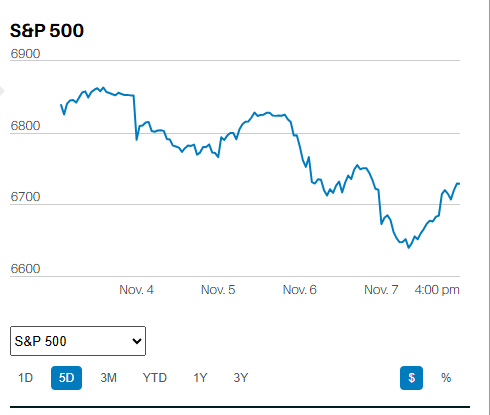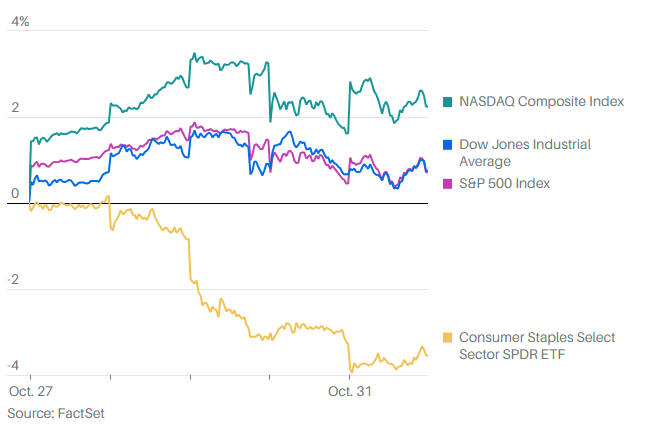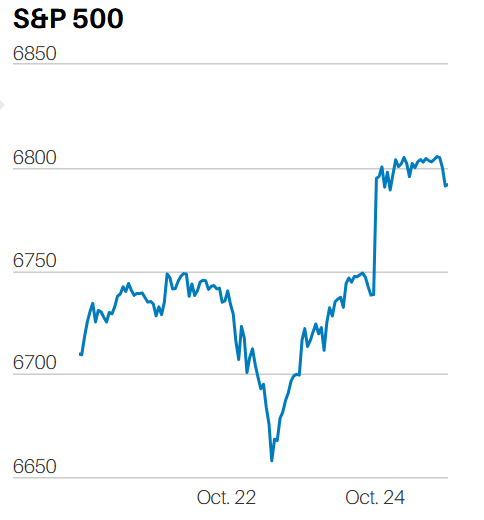From the Bleachers, Vol. 8
MARKET UPDATE
The S&P 500 rose 0.61% to 2,792.67 last week, basically going nowhere fast. However, it did hold above its 200-day moving average and it is now only about 5% away from its all-time high of 2940.91 set on September 21st. The S&P 500 is up about 18% from its closing low of 2351 back on 24 September. Money managers, anecdotally at least, seem neutral in their expectations for near-term market direction. The consensus seems to be that the market should be able to make additional headway this year based on single digit earnings growth and a reasonable price-to-earnings multiple, but it may need to digest its gains first. Of course, money managers always talk their book, which means they almost never admit, at least not publicly, that they’re negative on market direction. Corporate earnings growth is now expected to be negative in Q1, before starting to grow again in Q2. However, it’s well within the realm of possibilities that we experience two or more quarters of negative earnings growth, which might make it a tad more difficult for the market to continue advancing. Certainly, investors appear sanguine, at least as measured by the volatility index (VIX), which has fallen from a high of 36.2 last December to a current low of 13.51. The measure of volatility has had a ten handle only three times since 1989 and been below 10 only once (Sept 2017). Worth noting, periods of low volatility are inevitably followed by periods of high volatility, but that little nugget of wisdom isn’t particularly helpful as to the timing.
So if you’re looking for insights into near term market direction, well, you aren’t going to get them here, at least not this week. However, expected 10-year returns are another matter.
INVESTING
Price is everything and the U.S. market is expensive.
From last week: “Academic research shows that valuations are the best predictor of future returns over longer periods of time.” In fact, there are half a dozen metrics that are very predictive for 10-year returns. What those metrics are currently predicting is a return in the low single digits for the S&P 500 over the next 10 years. Shiller’s CAPE 10, Tobin’s Q, Price-to-Earnings, Price-to-Book, and Price-to-Sales all indicate subpar returns for the U.S. stock market in the coming decade.
How is that knowledge helpful for investors?
Well, for those folks who are nearing retirement, say within 10-years or so, might it not be helpful to use a lower expected return number in your retirement planning? Plugging in 9% to 10% for stocks over the next 10-years is likely going to leave you sadly disappointed and leave your retirement plan in disarray, perhaps even necessitating a delay in your retirement. Now, who wants that? It will likely leave you in a far better position if you plug in a low single digits number for stocks and increase your savings rate accordingly to make up for the shortfall in investment returns.
As well, knowing that the U.S. stock market isn’t going to exactly light it up should be a catalyst for seeking returns elsewhere. We just need to overcome our Home Country Bias and do some traveling abroad. International and emerging markets are less expensive than our home market, which makes sense because they’ve been terrible investments for the last 10-years. Look back a little further and you’ll find that international, and especially emerging markets trounced the S&P 500 from 2003 to 2007. Emerging markets returned 37% annually during that period against only about 13% for the U.S. market. No less an institution than Vanguard has come out on the side of international and emerging markets for the coming decade. "We expect lower returns in the next several years," Greg Davis, Vanguard's chief investment officer told CNBC back in November 2018. Specifically, Vanguard expects a 4 percent annualized return for the U.S. stock market over the next decade, versus 7 percent to 7.5 percent for international equities, Davis went on to say in the interview.
Price dictates future returns. The U.S. market is poised to go higher short-term, or not. However, the nasty bear market that will come when the current expansion does run its course is still in our future, and it will be painful for everyone, especially those people approaching retirement and those investors who are overweight U.S. markets and underweight international and emerging markets.
Regards,
Christopher R Norwood, CFA
Chief Investment Officer












